|
|
Post by YourAverageJoe on Oct 3, 2007 7:10:51 GMT -5
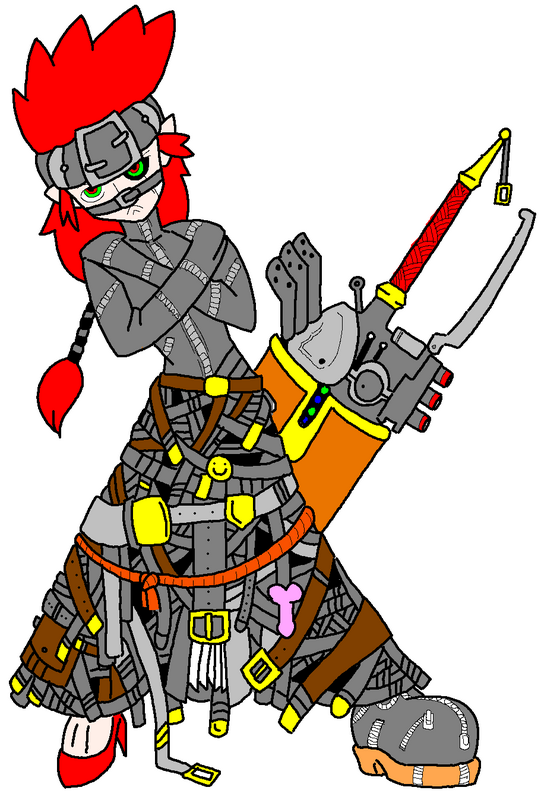 I found the epitome of zazz. He's supposedly from a game called Beltan Zipper XLII: Tilduran of Destinu. |
|
|
|
Post by Revolver Ocelot on Oct 3, 2007 7:13:50 GMT -5
I'm sort of surprised you picked the character you did on the bottom of your little Zazz post. A character like LuLu, who's design doesnt even make sense. The guy on the bottom, he doesn't appear to have much zazz besides from the general white haired look, I mean he's got a zipper down his jacket and buttons on his boots, both of which make sense. Zazz isn't all about looks. It's about action too. Have you seen the FFXIII Versus trailer? Everything this guy does is zazzified. He can just kill people, he kills people with zazz. I found the epitome of zazz I hope to god Tetsuya Nomura doesn't see this thread, because that picture will give him enough material to draw on for years to come. |
|
|
|
Post by necromaniac on Oct 3, 2007 9:43:07 GMT -5
Poor zazz character, getting into your clothes every morning must be a choir.
|
|
|
|
Post by Revolver Ocelot on Oct 3, 2007 9:58:44 GMT -5
Poor zazz character, getting into your clothes every morning must be a choir. Zazz characters only take their clothes off in fanfics. |
|
|
|
Post by necromaniac on Oct 3, 2007 10:28:39 GMT -5
That explains why their hair is always messy.
|
|
|
|
Post by Revolver Ocelot on Oct 9, 2007 21:56:05 GMT -5
Star Knight Tekkaman Blade
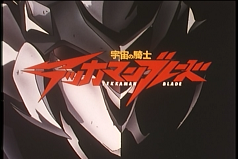
Studio: Tatsunoko
Director: Hiroshi Negishi
Writer: Hiroyuki Kawasaki, Katsuhiko Chiba, Kuniaki Yamashita, Nobuaki Kishima & Seiko Watanabe
Producer: Asako Kakei, Hidenori Itabashi & Hiroki Narushima
Composer: Kaoru Wada
Designer: Tomonori Kogawa (characters), Rei Nakahara & Yoshinori Sayama (mecha)
Released: February 18th, 1992
Genre: Action, Henshin, Science Fiction
Type: Continuous TV Series
Runtime: 49 episodes, 25 minutes each (1225 minutes)
US License: AnimeWorksMany of us were unknowingly exposed to Tekkaman Blade[/i] in its modified, Americanized form known as Teknoman[/i], which aired at 10:30 Sunday mornings on UPN (this of course varies depending on where you are from). Just as many of us had no idea that Robotech[/i] was a mishmash of 3 different anime sagas, I had no idea that Teknoman[/i] was an anime when I first saw it. It was just a really badass and unusually violent cartoon. Sadly, the American series was only half complete, and ended suddenly after 26 of its 43 projected episodes (although it continued its complete run in Australia, where the show was unusually popular). It was not until years later that I finally saw the complete, unedited Japanese show, and as amazed as I was with Teknoman[/i] when I was a kid, I had found a completely different level of appreciation for Tekkaman Blade[/i]. 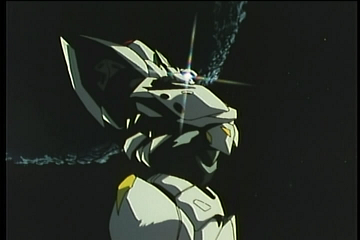 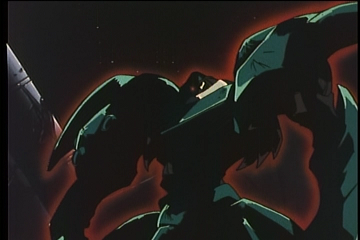 Tekkaman Blade Tekkaman Blade[/i] is the spiritual successor to the ancient 70s series, Tekkaman: The Space Knight[/i], which was the concept of none other than Final Fantasy character designer Yoshitaka Amano. While the show was not groundbreaking in Japan, it was quite popular in the US and was one of the first syndicated anime shows to cross the pacific along with Speed Racer[/i], Star Blazers[/i], Galaxy Express 999[/i], and several others. However, Tekkaman Blade[/i] shares only its name and a few symbolic plot elements with its predecessor, as it takes place in an entirely different continuity. The story goes, in the year UGY (United Global Year) 193, the Earth is invaded by an alien force known as the Radam. Having crippled and infested the Earth’s mass transit and defense system, the Orbital Ring, the Radam have left the Earth nearly defenseless. On top of that, the Radam are covering the surface of the earth with a mysterious type of vegetation. 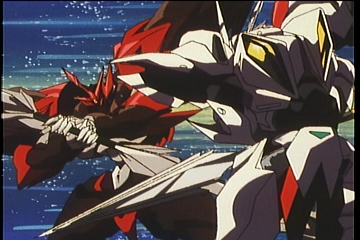 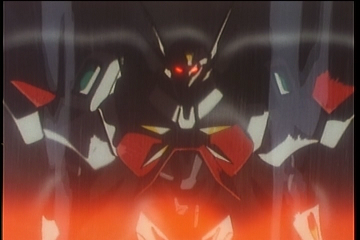 When all hope seems lost, a savior appears, a white knight clad in organic armor. He alone has the power to defeat the Radam. The Space Knights, who are the last line of defense against the invaders, take in this mysterious warrior. D-Boy, as he is later nicknamed, professes to have amnesia. But the real story involving his origin, the origins of the Radam, and the terrible truth of their identity will be revealed piece by piece as this long series plays out. 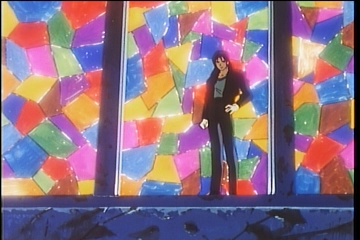 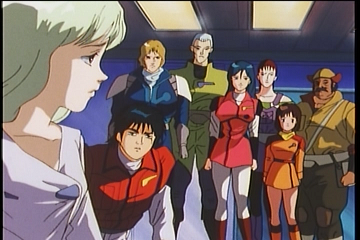 While it is a typical set-up, Tekkaman Blade[/i] is not your typical shonen action show. There is a heavy emphasis on plot and character backstory. The truth of D-Boy’s past and the history he has with his family is very fascinating, and becomes the driving force behind the show very soon in its progression. It is hard to reveal anything that does not sound like standard action anime stuff without spoiling something, but believe me, this show’s story is simply brilliant. 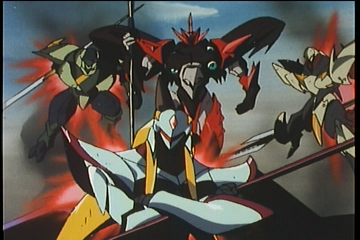 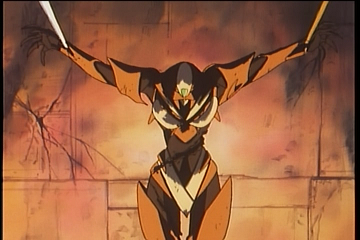 Tekkaman Blade Tekkaman Blade[/i] is not perfect, however. At 49 episodes, it is fairly long. As with any series this long, there is bound to be some filler. Indeed, there are a few filler episodes here that could have easily been thrown away. On top of pointless but amusing character side-stories, there are 3 recaps, two of them being fairly badly placed. For this, I have to deduct some points from Negishi’s directing for butchering the show’s otherwise great pacing here and there.  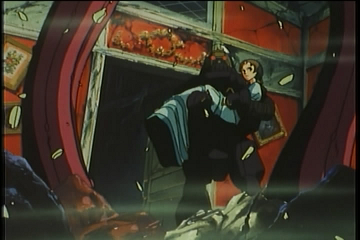 Visually, Tekkaman Blade[/i] does not fail to impress. For a TV show, it looks pretty amazing at times. Negishi, who is famous for the incredibly beautiful Tenchi Muyo[/i], decided to dump most of the show’s budget into about half the episodes rather than stretch it out across the entire series. In the end, what you get is a show where half the episodes look average (i.e. V Gundam[/i]), and the other half has absolutely spectacular, OVA quality animation. I think the blandness of some of the episodes is a worthy sacrifice, as the more dramatic episodes are some of the best looking pieces of animation of that time outside of a Miyazaki flick. 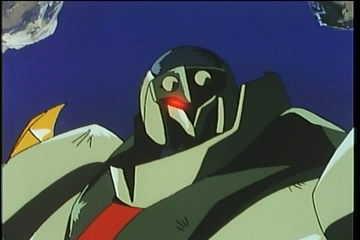  And last but certainly not least is Tekkaman Blade[/i]’s incredible soundtrack by veteran composer Kaoru Wada. While many shows of its kind are littered with progressive rock tracks and pop, Tekkaman Blade[/i]’s soundtrack is a wonderful assortment of epic orchestral pieces right out of a Hollywood spectacle. The prologue theme, "The Ruins in the Sand and the Golden Land", is a really rousing and spirited piece that will have you cheering whenever it plays or whenever they whip it out when Blade is going berserk on some poor Radam. 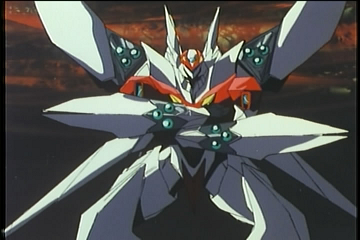 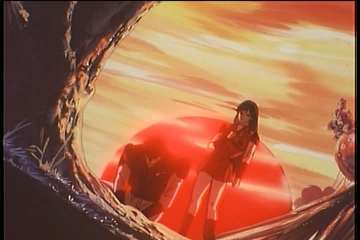 Tekkaman Blade Tekkaman Blade[/i] was localized back in the days where studio execs thought the heads of American children would explode if they were confronted with existential questions, Japanese names or homosexuals. Thusly, the localized Teknoman[/i] show is something of a different experience, but still much truer to its source material than most localizations. Saban’s dub, which utilized veteran Pioneer (later Geneon) voice actors is very good. Sadly, the same cannot be said for other elements. The music was replaced entirely, with none of the original orchestral themes. Instead we get about 5 crappy house techno themes that are repeatedly endlessly throughout the series. The structure of the series is also a bit different. Several episodes, especially toward the end of the series, were consolidated with other episodes or removed entirely. At only 43 episodes, Teknoman[/i] runs 6 episodes short of the original version, and ending is so condensed that it’s really hard to follow. 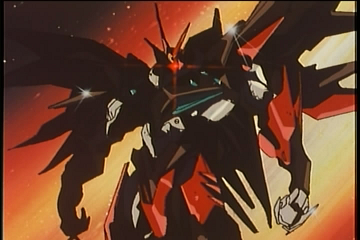 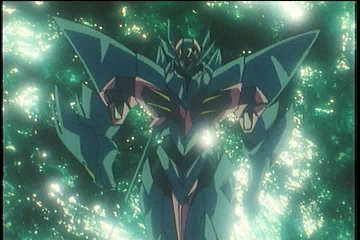 To sum it all up, you just cannot go wrong with Tekkaman Blade[/i]. It is exciting, action packed, deep, thought provoking, and tragic. At the cost of waxing nostalgically like a fanboy, I have to say this is one of the best action shows of all time. - Shalashashka
Story: S
Animation: S
Music: S
Design: S
Direction: B
Overall: S
Sub or Dub: Sub
OP1: “Reason” by Yumiko KosakaAwesome, hyperactive hard rock intro that sets the mood for the badassery to come. A
OP2: “Eternal Loneliness” by Yumiko KosakaDo not let the title fool you. This song is just as badass as the first one. A
ED1: “Energy of Love” by Yumiko KosakaI like this song. It is classic 80s love cheese, but it still wins somehow. B-
ED2: “Lonely Heart” by Yumiko KosakaA much more serious, poignant song than the first. B+Interested in this anime? Buy it here!
|
|
|
|
Post by Revolver Ocelot on Nov 1, 2007 21:06:20 GMT -5
Voices of a Distant Star

Studio: CoMix Wave
Director: Makoto Shinkai
Writer: Makoto Shinkai
Producer: Yoshihiro Higawara
Composer: Tenmon
Designer: Makoto Shinkai
Released: February 2nd, 2003
Genre: Drama, Mecha, Romance, Sci-Fi
Format: OVA
Runtime: 25 minutes
US License: ADV Voices of a Distant Star Voices of a Distant Star is proof that “artistic” and “good” are not synonymous. Being artistic can be great, but even at its greatest, it is only a flavoring particle, an enhancement. It cannot be the basis of a work of storytelling. Take Gankutsuou: The Count of Monte Cristo[/b], for instance. An incredible show, and very artistic. The use of coloring and texturing made every frame a piece of mouthwatering eye-candy. The way the story is told, the use of juxtaposition and scaling, the fascinating “imaginary” camera moves, it was art in motion. However, you could easily take all of that out of the show and it would not be much different. It would still be just as wonderful an experience because the story is so strong and is told with such care and tact that the artistic elements are almost negligible in the grand scheme of things. Now, if you were to take all of the artistic elements out of Voices of a Distant Star, you would not be left with very much. In fact, you would be left with virtually nothing. I am not sure about you, but I sure as hell know that if a work of narrative storytelling can be reduced to an insignificant speck at the removal of one element, it probably was not all that great to begin with.  Voices of a Distant Star Voices of a Distant Star is the story of two star-crossed (naturally) lovers, Mikako Nagamine and Naboru Terao. They are literally the only characters in the OVA, and that works because this is a romance story at its core and they are the only two characters that need to exist. The high school sweethearts enjoy their time together until Mikako is selected by the U.N. to join the crew of an interstellar warship called the Lysithea, to do battle against the mysterious alien race known as the Tarsians. For all its acclaim at originality, Voices of a Distant Star has the typical mecha set-up. Military organizations always search for ace pilots in Japanese high schools, because when the fate of the world and all 6 billion people (or more if said mecha show takes place in the distant future) on it is at risk, there is no better way to defend us than to give a sensitive, hormonal, emotional, unreliable 14-17-year old highschooler a giant robot that can destroy a city in the blink of an eye.  Okay, so even though this mecha aspect feels thrown in simply for the sake of drawing mecha fans to a type of OVA they would otherwise never watch, my many years of dealing with the mecha genre of anime and its often ridiculous setups can allow me to get past this. What I can not get past, however, is Voices of a Distant Star[/b]'s obscurity and resounding sense of self-importance. In this excruciatingly short 25 minutes, a great deal of time is spent with still frames with flowing, narrative dialog unrelated to what we see in the frames. This is a juvenile presentation method typical of a high school or college student, always seeking to be as poignant as possible without considering how silly it all sounds. The sad thing is that Makoto Shinkai was almost thirty when he penned the script for Voices of a Distant Star[/b].  So Mikako goes off with the Lysithea and they jump into hyperspace. Her only contacts with Naboru are text messages sent via cell phone. Unfortunately, her travels now represent a dilemma. As the Lysithea travels further and further away from Earth, time dilation begins to take effect and the delay between Mikako and Naboru’s text messages begins to grow, to the point where Mikako’s last message takes 8 years to reach Naboru. As Mikako, remaining 15 years old, fights the Tarsians on their home world 8 light years away, Naboru, now 24, waits patiently for Mikako to return.  Now, I am not some heartless bastard who retches at the very mention of love. I happen to be a very loving and compassionate person myself. But Voices of a Distant Star[/i]'s naive, adolescent brand of romance is not my cup-o'-tea. That whole stubborn, immature, "This is the person I want to be with and if I can't be with them I don't wanna be with anybody else!" Romeo & Juliet ideology never flies with me, especially when it is presented in as pretentious a way as it is in this short and ultimately pointless-feeling OVA. The biggest problem is that there just is not anything at stake here. Naboru and Mikako are barely teenagers at the beginning and we do not even know how long they have been together. I do not care how much of an idealist you were when you were 15, you did not know a damn thing about love. The two of them (assuming Mikako makes it out alive) have their whole loves ahead of them, and for Naboru to waste his waiting for a girl he liked in his junior year of highschool is just too silly and ridiculous for me to take seriously. We all had girlfriends and boyfriends or had a major crush in high school, but we grew up and moved on, and the fact that I have grown up and moved on means I just cannot enjoy this "love story".  At first, I thought Voices of a Distant Star looked amazing. The art style is extremely detailed, and shows an interesting emphasis on the environments rather than the characters in them. The characters, however, are a bit of a problem. I am not sure what it is, but Naboru and especially Mikako look really ugly, and their facial features are occasionally out of proportion, rendering a fairly cringe-worthy effect (see screenshots above). Another big problem is the mecha Mikako pilots. Rather than sensibly using 2D animation, the mecha (and also the Tarsians) are rendered in really low-budget CG. These things are pretty damn laughable, looking like something out of an ancient Playstation game. I do not really have a bias against using 3D models in anime, but if you are unable to make it look good, do not bother trying. Sticking to 2D was the obvious way to go here, especially considering it was essentially a one-man project.  Voices of a Distant Star Voices of a Distant Star was localized somewhat well by ADV. I cannot speak well of the English translation, but the voice acting is decent. ADV also put in some extras, such as an alternate version of the feature, and 3 versions of Makoto Shinkai’s first animated short, She and Her Cat: Their Viewpoints[/b]. This short is an odd little introspective about a girl who adopts a cat, and the cat describes their lives together. Despite sounding eerily sexual at times, it is an amusing little piece. To round out the technical side of this OVA, the music is obviously synthesized and sounds like something out of a late-night Cinemax feature.  So in the end, what is presented and often heralded as a masterpiece is merely a paper-thin, haughty, pubescent, and ultimately inconsequential love story that has somehow launched Makoto Shinkai into penultimate Miyazaki status. Do not be deceived by all the flashy bells and whistles designed to fool you into thinking you are experiencing something deep. Voices of a Distant Star is short, obscure, and occasionally ugly. I have no pity for Shinkai doing this OVA more or less alone. It is not a “Get out of jail free” card for sucking. If you are curious about this OVA, do yourself a favor and watch Gunbuster[/b] instead. It essentially tells the same story, but does not have its head stuck as far up its own ass as this OVA. And if you have already seen Gunbuster, you have no reason to see this. That is all. - Shalashashka
Story: C
Animation: B
Design: B
Music: D
Direction: D
Overall: D
Sub or Dub: SubInterested in this anime? Buy it here!
|
|
|
|
Post by Ace Whatever on Nov 4, 2007 8:04:59 GMT -5
That reminds me of something. What do you call the situation when a character becomes stuck in growth limbo (slow time lapse or cryo-freeze) and then comes back to find everyone's all grown up? I tried looking up the trope in Rahxephon's entry but couldn't find it. |
|
|
|
Post by jameseightbitstar on Nov 4, 2007 21:15:11 GMT -5
That reminds me of something. What do you call the situation when a character becomes stuck in growth limbo (slow time lapse or cryo-freeze) and then comes back to find everyone's all grown up? I tried looking up the trope in Rahxephon's entry but couldn't find it. I'm not sure what most sources would call it, but personally I'd give it a name that involves either Rip Van Winkle or TekWar. |
|
|
|
Post by Ace Whatever on Nov 5, 2007 10:13:05 GMT -5
The Rip Van Winkle entry is either considered a slightly different situation or it just neglects to mention Gunbuster or Rahxephon as examples.
Maybe if I get the time, I'll review PLAWRES Sanshiro.
|
|
|
|
Post by vysethebold on Nov 5, 2007 13:13:14 GMT -5
I call it the Lion-O Effect!
|
|
|
|
Post by jameseightbitstar on Nov 5, 2007 14:51:47 GMT -5
Wouldn't the Lion-O effect be where everyone else is the same age but the *hero* is older?
|
|
|
|
Post by brianc on Nov 5, 2007 23:38:25 GMT -5
Voices of a Distant StarVoices of a Distant Star was localized fairly well by ADV. I can’t speak well of the English voice acting, but the translation seems to be good. Sub or Dub: Either I disagree. The dub is inaccurate and has parts that change the meaning of what's going on, if I remember correctly. Subtitles are much better. |
|
|
|
Post by Revolver Ocelot on Nov 6, 2007 8:23:52 GMT -5
Infinite Ryvius
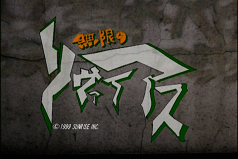
Studio: Sunrise
Director: Goro Taniguchi
Writer: Yousuke Kuroda & Yuichiro Takeda
Producer: Fukashi Azuma, Fumikuni Furusawa & Kazunori Takashiro
Composer: Katsuhisa Hattori & M.I.D.
Designer: Hisashi Hirai (characters) & Kimitoshi Yamane (mecha)
Released: October 6th, 1999
Genre: Drama, Mecha, Sci-Fi
Format: Continuing TV Series
Runtime: 26 episodes, 25 minutes each (650 minutes)
US License: Bandai Home Entertainment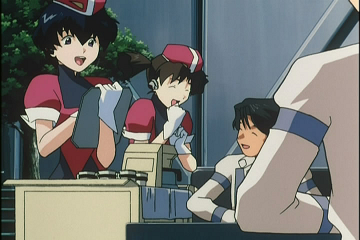 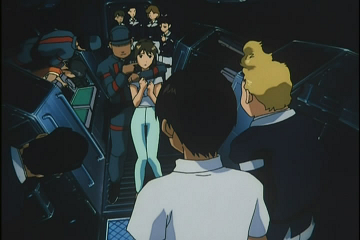 Infinite Ryvius Infinite Ryvius definitely came as a surprise to me. I went into it fully expecting the usual Sunrise mecha treatment. Lots of giant robots, lots of clashing morals and ideals, lots of wordy rhetorical monologues, and lots of people blowing up inside cockpits. It seems, however, that Goro Taniguchi was saving all that stuff for Code Geass: Lelouch of the Rebellion. This show is an entirely different animal. There is only one giant robot in the entire show and very little in the way of action. The focus is on emotional conflicts, maturing, loss of innocence, psychosocial relationships and above all else, responsibility.  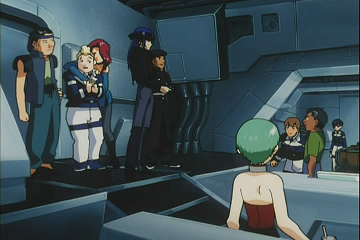 Infinite Ryvius Infinite Ryvius[/b] is quite often compared to Lord of the Flies. This is a fairly accurate comparison because the show’s set up, execution and themes are very similar. The series takes place in the year 2225. The solar system has been devastated by a sudden eruption of plasma from the Sun, which has covered all the planets in an immense cloud structure known as the Gedould. Although the Gedould caused the deaths of billions of people, it also jump-started mankind’s desire to explore deep space in order to seek out new habitats. Thus, Infinite Ryvius takes place in the height of a technological revolution where mankind has created civilizations on nearly every planetary system.  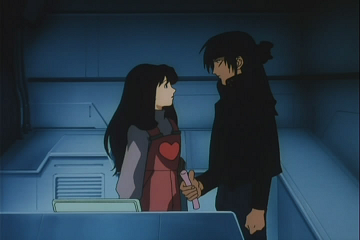 High school students from earth are encouraged to join space academies rather than colleges. One such student is Kouji Aiba, who joins the massive, 400+ member crew of the Space Station Liebe Delta. Accompanying Kouji is his childhood sweetheart, Aoi Housen, and Kouji’s brother, Yuki Aiba, with whom Kouji has an extremely turbulent and often violent relationship with. Once on board the Liebe Delta, they meet up with a horde of fascinating characters such as Ikumi Oze, who becomes Kouji’s best friend (and later, bitter enemy), Kozue Izumi, Aoi’s extremely bubbly friend who undergoes a complete transformation after a horrific event, Faina Shinozaki, a religious fanatic with a dark past who becomes obsessed with Kouji, Airs Blue, a thuggish recluse who aims to take over the ship, the Zwei, a team of elite students in the space academy, and the mysterious Neya, who appears to have the ability to read the minds of those around her. 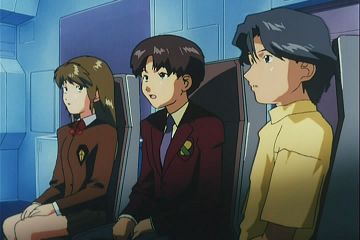 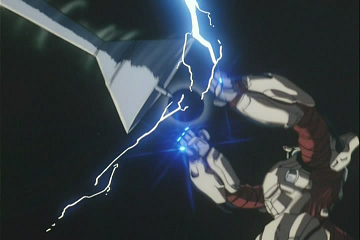 The cast of Infinite Ryvius is truly epic. I doubt any anime, or any work of fiction in general, has had this many characters to keep track of, and to attempt this in only 26 episodes was quite an undertaking. Having well over 100 named characters and many more background characters lumped together in one series sounds like a trainwreck, but Infinite Ryvius manages to pull it off without a hitch and it manages to develop many of them quite profoundly. Not only that, but there are too many dynamic character relationships in the show to count.  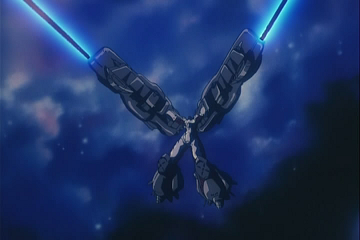 Not long after all the characters are introduced, disaster strikes. The Liebe Delta begins a routine dive into the Gedould, however, a mysterious event occurs and the Liebe Delta begins to break up. It is revealed that this is caused by a group of terrorists, and the few adults on board the Liebe Delta attempt to fight them off, but are all killed. All the students are evacuated into a mysterious ship housed deep within the space station known as the Ryvius. Not only that, but now that the students have discovered the top secret Ryvius ship, they are being treated as enemies of the Earth and are being hunted by several death squads. Now, with no experienced adults to guide them, the crew of the Ryvius has to somehow find sanctuary whilst fleeing their enemies. Things continually get uglier and uglier as the series presses on, both between the Ryvius and the enemy ships, and within the Ryvius itself between the tightly cramped students. 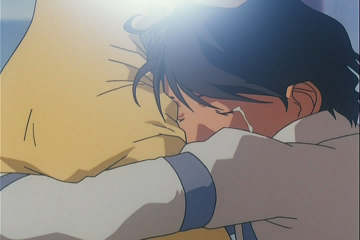 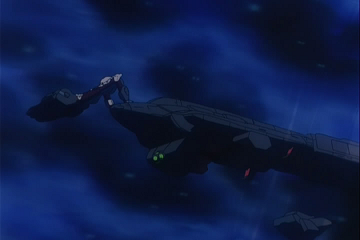 Infinite Ryvius Infinite Ryvius[/b] is not only fascinating and intense, it is also beautiful. This show represents character designer Hisashi Hirai’s ( s-CRY-ed[/b], Mobile Suit Gundam SEED[/b], Fafner of the Azure: Dead Aggressor[/b], Mobile Suit Gundam SEED Destiny[/b], Gin-iro no Olynssis[/b], and most recently, Heroic Age[/b]) first outing as a chief designer. Say what you will about his designs, I love them. To create 100+ characters and make them all look completely different is quite an accomplishment. Not only that, but Infinite Ryvius is exceedingly well animated, even when stacked up against other shows of its era like Cowboy Bebop. 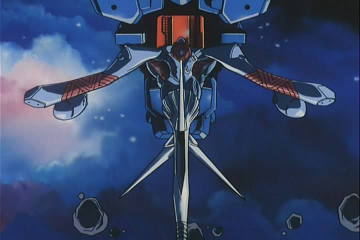 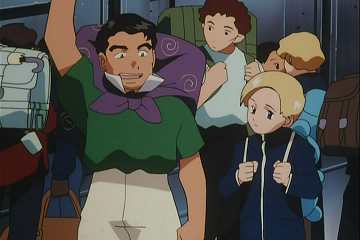 But as beautiful as Infinite Ryvius is, the best part about the show’s presentation is the music. This show has one of the best soundtracks I have ever heard. There is a diverse mixture of orchestral, pop, hip-hop, rap, jazz, just about every genre of music you can imagine, and this would turn out to be a tradition for director Goro Taniguchi ( Planetes, Gun x Sword, Code Geass: Lelouch of the Rebellion).   Infinite Ryvius Infinite Ryvius[/b] is not a very popular show, but I guarantee you it is more than worth a look. There is something in it for everyone, so I suggest you give it a chance. I promise you, you will find something worth your while. It is an excellent show in almost every respect, with a massive cast of unforgettable characters and a boatload of intense confrontations. If you can nab Bandai’s box set, it is a great thing to own as it is packed full of omake. If not.. well, do what you need to do to see this series. - Shalashashka
Story: B
Animation: A
Design: S
Music: S
Direction: B
Overall: A
Sub or Dub: Sub
OP: “-dis” by Mika ArisakaThis song is pretty damn awesome. It is a hip-hop/pop hybrid, which is something of a rarity in anime. Great beats, great lyrics, and Arisaka’s vocals are just awesome. Her being bilingual allows the more “soul” parts of the song to flow much more naturally. A+
ED: “Yume wo Sugitemo” by Mika ArisakaIn stark contrast to the opening, this song is very slow and somber, but picks up toward the end. A very beautiful ending. AInterested in this anime? Buy it here!
|
|
|
|
Post by dai jou bu on Nov 7, 2007 13:39:08 GMT -5
Can I beat you up for bashing hoshi no koe (Voices of a Distant Star)? Please? (Note: That was a sarcastic remark) Considering that the animation was done by Makoto Shikai himself, that's technically amazing. I'm more than willing to forgive the guy for crappy character designs and poor story (which comes from working for an eroge studio for awhile now) if they looked that awesome. |
|